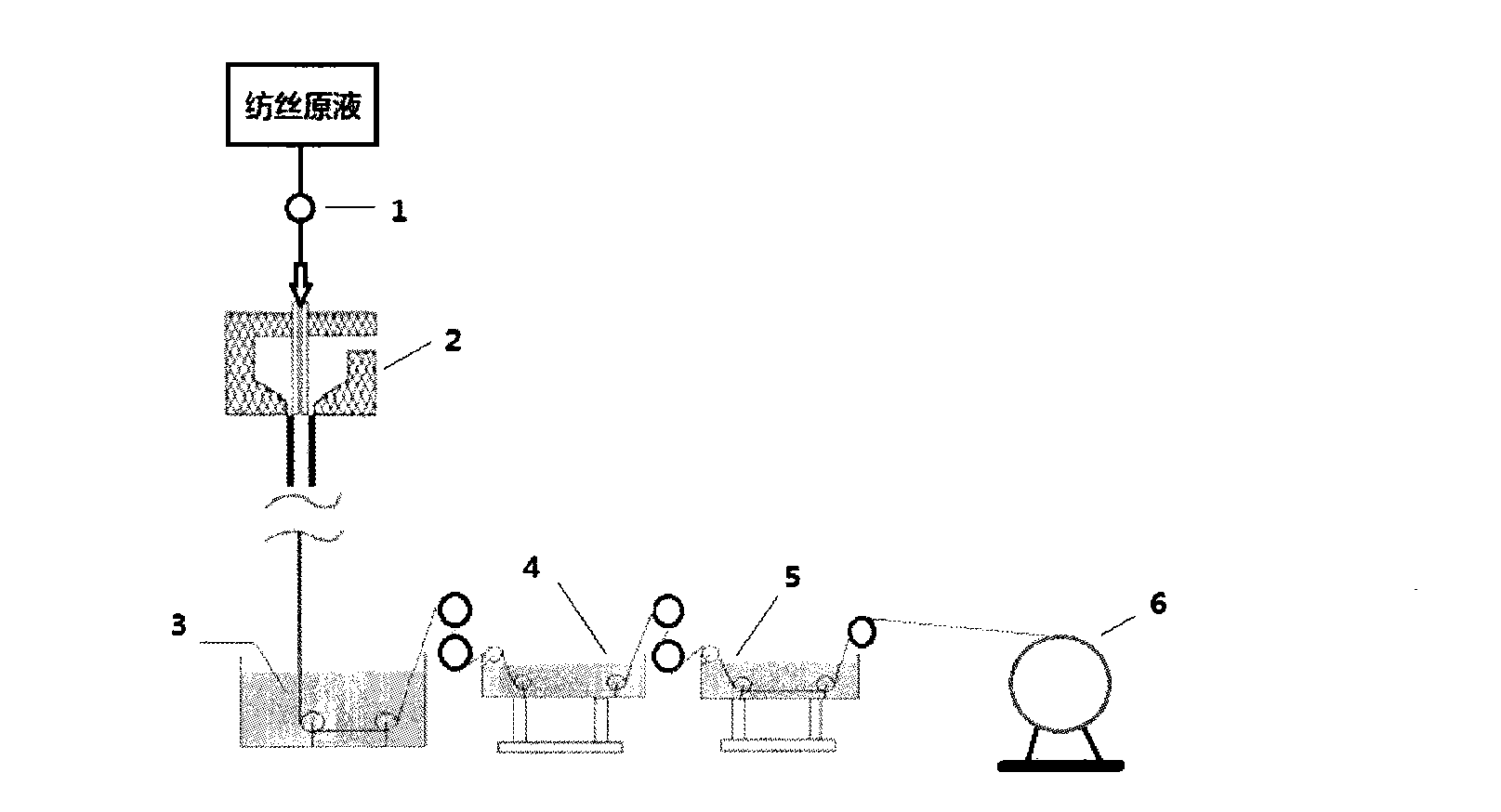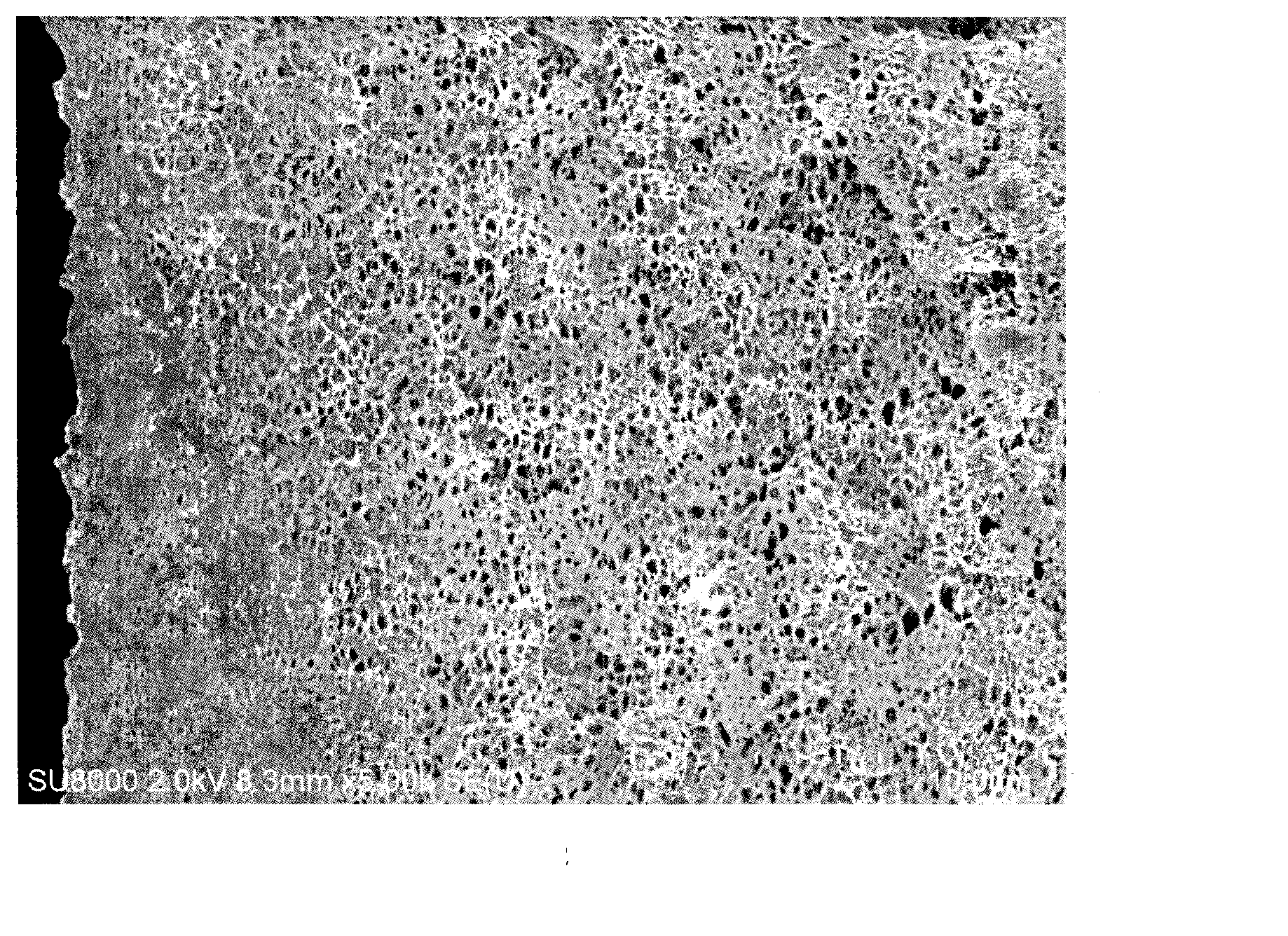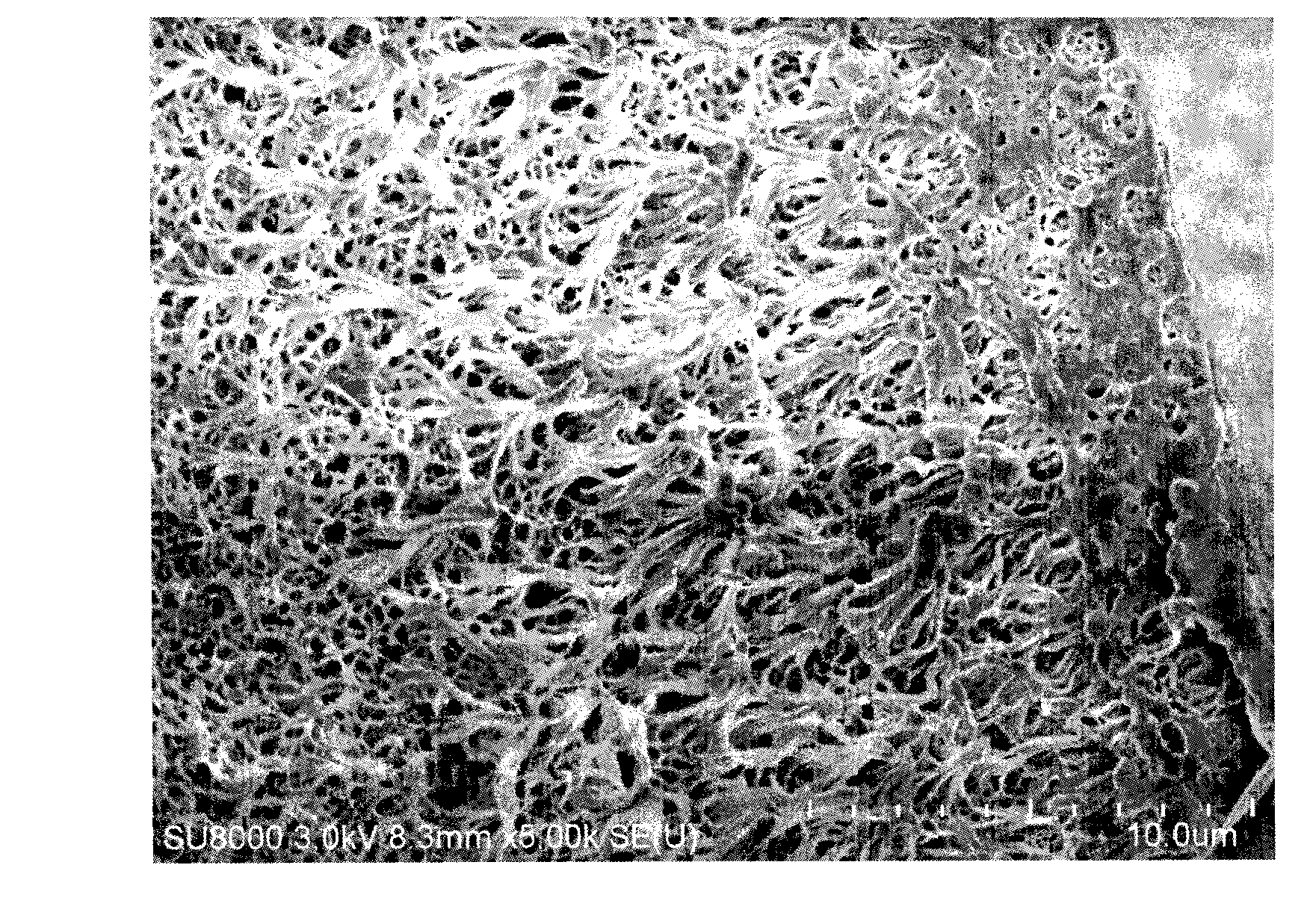Method for preparing amphiphilic block copolymer modified polyvinylidene fluoride hollow fiber membrane
A polyvinylidene fluoride and copolymer modification technology, applied in the field of material science, can solve problems such as adsorption, achieve high filtration accuracy, improve hydrophilic properties, and increase strength
- Summary
- Abstract
- Description
- Claims
- Application Information
AI Technical Summary
Problems solved by technology
Method used
Image
Examples
Embodiment 1
[0042] (1) Preparation of polyvinylpyrrolidone homopolymer:
[0043] Dissolve 2 parts of N-vinylpyrrolidone in 98 parts of 1,4-dioxane to make a 2% N-vinylpyrrolidone solution, and add 0.2 parts of S, S'-bis(α,α' -Methyl-α"acetic acid) trithiocarbonate, with 0.1 part of AIBN in N 2 Under protection, react at 60° C. for 4 hours to obtain a PVP homopolymer with a chain transfer agent terminal carboxyl group.
[0044] (2) Modification of polyvinylpyrrolidone homopolymer:
[0045] Dissolve 1 part of PVP homopolymer in 19 parts of dichloromethane to make a solution with a concentration of 5%, then add 2 parts of DCC and 8 parts of HOBT (based on PVP), then add 10 parts of Allylamine (based on PVP) was reacted at 0°C for 72 hours, and modified PVP was obtained after separation and treatment on a silica gel column.
[0046] (3) Modified PVP and organosiloxane polymer to generate block copolymer:
[0047] Dissolve 4 parts of modified PVP and 6 parts of vinyl polydimethylsiloxane i...
Embodiment 2
[0049] (1) Preparation of polyvinylpyrrolidone homopolymer:
[0050] Dissolve 100 parts of N-vinylpyrrolidone in 900 parts of 1,4-dioxane to make a 10% N-vinylpyrrolidone solution, and put 10 parts of S, S'-bis(α,α' -Methyl-α"acetic acid) trithiocarbonate, with 0.5 parts AIBN in N 2 Under protection, react at 80°C for 72 hours to obtain a PVP homopolymer with a chain transfer agent terminal carboxyl group.
[0051] (2) Modification of polyvinylpyrrolidone homopolymer:
[0052] Dissolve 1 part of PVP homopolymer in 1 part of dichloromethane to make a solution with a concentration of 50%, then add 8 parts of DCC and 4 parts of HOBT (based on PVP), and then add 50 parts of Allylamine (based on PVP) was reacted at 80° C. for 1 hour, and modified PVP was obtained after separation and treatment by silica gel column.
[0053] (3) Modified PVP and organosiloxane polymer to generate block copolymer:
[0054] Dissolve 3 parts of modified PVP and 7 parts of vinyl polydimethylsiloxane...
Embodiment 3
[0056] (1) Preparation of polyvinylpyrrolidone homopolymer:
[0057] Dissolve 30 parts of N-vinylpyrrolidone in 20 parts of 1,4-dioxane to make a 60% N-vinylpyrrolidone solution, and add 0.3 parts of S, S'-bis(α,α' -Methyl-α"acetic acid) trithiocarbonate, with 4.5 parts AIBN in N 2 Under protection, react at 60° C. for 72 hours to obtain a PVP homopolymer with a chain transfer agent terminal carboxyl group.
[0058] (2) Modification of polyvinylpyrrolidone homopolymer:
[0059] Dissolve 1 part of PVP homopolymer in 4 parts of dichloromethane to make a solution with a concentration of 20%, then add 4 parts of DCC and 4 parts of HOBT (based on PVP), and then add 40 parts of Styrylamine (based on PVP) was reacted at 25°C for 24 hours, and modified PVP was obtained after separation and treatment by silica gel column.
[0060] (3) Modified PVP and organosiloxane polymer to generate block copolymer:
[0061] Dissolve 6 parts of modified PVP and 4 parts of styrene-based polydimet...
PUM
| Property | Measurement | Unit |
|---|---|---|
| diameter | aaaaa | aaaaa |
| bubble point pressure | aaaaa | aaaaa |
| tensile strength | aaaaa | aaaaa |
Abstract
Description
Claims
Application Information
 Login to View More
Login to View More - R&D
- Intellectual Property
- Life Sciences
- Materials
- Tech Scout
- Unparalleled Data Quality
- Higher Quality Content
- 60% Fewer Hallucinations
Browse by: Latest US Patents, China's latest patents, Technical Efficacy Thesaurus, Application Domain, Technology Topic, Popular Technical Reports.
© 2025 PatSnap. All rights reserved.Legal|Privacy policy|Modern Slavery Act Transparency Statement|Sitemap|About US| Contact US: help@patsnap.com



